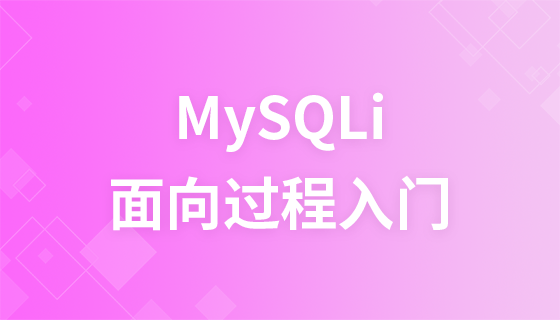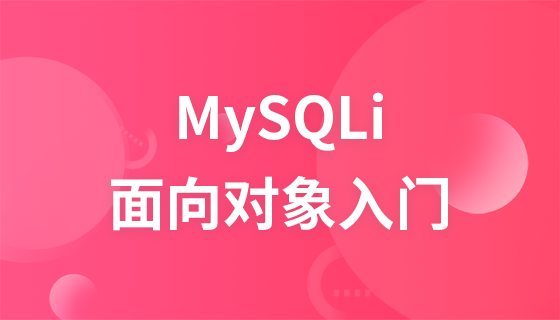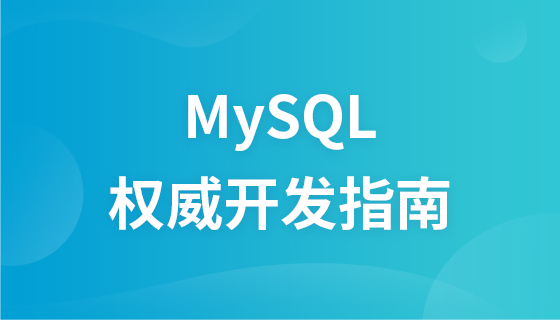使用 slick 或 doobie 等函数式数据库库桥接 mysql 与 scala 的函数式编程,将 sql 查询结果转换为不可变数据结构;2. 定义 case class 数据模型并与数据库表映射;3. 使用 slick 的类型安全查询或 doobie 的纯函数式 sql 构建查询;4. 通过 future(slick)或 io/task(doobie)实现异步非阻塞查询;5. 利用 resource 管理数据库连接生命周期,确保连接自动关闭;6. 通过依赖注入传递 transactor,避免全局状态,提升可测试性;7. 使用 hikaricp 配置连接池,合理设置最大连接数、最小空闲数、超时时间等参数;8. 在函数式上下文中使用 io 显式处理异常,避免副作用;9. 利用 explain 和 mysql profiling 分析查询性能,优化索引和 sql 语句;10. 结合 prometheus 与 grafana 等工具监控数据库性能,优化配置并使用缓存减少数据库压力;11. 通过批量操作和减少交互次数提升代码层面性能;12. 使用内存数据库如 h2 进行单元测试,确保数据库访问代码的可靠性。这些实践共同实现了 mysql 在 scala 函数式编程中的高效、安全、可维护集成。

直接上答案:MySQL与Scala的函数式编程交互,关键在于桥接关系型数据库的命令式操作和函数式编程的纯粹性。核心在于使用合适的库,将SQL查询结果转换为Scala的不可变数据结构,并利用Future实现异步查询,避免阻塞主线程。
解决方案:
选择合适的库: 推荐使用
slick
doobie
slick
doobie
IO
Task
定义数据模型: 使用 case class 定义与数据库表对应的 Scala 数据模型。例如:
case class User(id: Int, name: String, email: String)
构建查询: 使用选定的库构建 SQL 查询。
slick
doobie
Slick 示例:
import slick.jdbc.MySQLProfile.api._
class Users(tag: Tag) extends Table[User](tag, "users") {
def id = column[Int]("id", O.PrimaryKey, O.AutoInc)
def name = column[String]("name")
def email = column[String]("email")
def * = (id, name, email) <> (User.tupled, User.unapply)
}
val users = TableQuery[Users]
// 查询所有用户
val query = users.result
// 查询特定 ID 的用户
def getUser(userId: Int) = users.filter(_.id === userId).result.headOptionDoobie 示例:
import doobie._
import doobie.implicits._
import cats._
import cats.effect._
import cats.implicits._
implicit val cs = IO.contextShift(ExecutionContexts.global)
val xa = Transactor.fromDriverManager[IO](
"com.mysql.cj.jdbc.Driver", // driver classname
"jdbc:mysql://localhost:3306/mydatabase", // connect URL (driver-specific)
"user", // user
"password" // password
)
def getUser(userId: Int): IO[Option[User]] = {
sql"SELECT id, name, email FROM users WHERE id = $userId".query[User].option.transact(xa)
}异步查询: 使用 Scala 的
Future
cats-effect
IO
Task
Future 示例 (Slick):
import scala.concurrent.ExecutionContext.Implicits.global
import scala.concurrent.Future
val db = Database.forConfig("mydb") // 在 application.conf 中配置数据库连接
val futureResult: Future[Seq[User]] = db.run(query)
futureResult.map { users =>
// 处理查询结果
users.foreach(println)
}.recover {
case e: Exception => println(s"查询失败: ${e.getMessage}")
}IO 示例 (Doobie):
import cats.effect.IO
import doobie._
import doobie.implicits._
def getAllUsers: IO[List[User]] = {
sql"SELECT id, name, email FROM users".query[User].to[List].transact(xa)
}
val program: IO[Unit] = for {
users <- getAllUsers
_ <- IO(users.foreach(println))
} yield ()
program.unsafeRunSync()错误处理: 函数式编程强调显式的错误处理。使用
Try
Either
IO
Task
doobie
IO
连接池: 使用连接池来管理数据库连接,避免频繁创建和销毁连接,提高性能。
slick
doobie
使用这些方法,可以将MySQL集成到Scala函数式编程环境中,并充分利用异步特性提高应用程序的响应速度。
MySQL 连接池配置的最佳实践
连接池是管理数据库连接的关键组件,它通过复用连接来减少创建和销毁连接的开销,从而提高性能。以下是一些 MySQL 连接池配置的最佳实践:
选择合适的连接池库: HikariCP 是一个高性能的 JDBC 连接池,被广泛认为是 Java/Scala 生态系统中最好的选择之一。它轻量级、快速,并提供了丰富的配置选项。
配置最大连接数:
maximumPoolSize
maxPoolSize
配置最小空闲连接数:
minimumIdle
minIdle
配置连接超时时间:
connectionTimeout
配置空闲超时时间:
idleTimeout
配置最大生存时间:
maxLifetime
测试连接: 配置连接池定期测试连接的有效性,可以使用
connectionTestQuery
SELECT 1
监控连接池: 使用监控工具来监控连接池的性能指标,例如连接数、活跃连接数、空闲连接数、等待连接数等。这可以帮助你及时发现和解决连接池相关的问题。
示例配置 (HikariCP):
dataSourceClassName=com.mysql.cj.jdbc.Driver jdbcUrl=jdbc:mysql://localhost:3306/mydatabase username=user password=password maximumPoolSize=20 minimumIdle=5 connectionTimeout=30000 idleTimeout=600000 maxLifetime=1800000 connectionTestQuery=SELECT 1
通过遵循这些最佳实践,可以有效地配置 MySQL 连接池,从而提高应用程序的性能和稳定性。
函数式编程中处理数据库连接的正确姿势
在函数式编程中,处理数据库连接需要特别注意,以保证程序的纯粹性和可测试性。传统的命令式编程方式通常依赖于全局状态和副作用,这与函数式编程的原则相悖。以下是一些在函数式编程中处理数据库连接的正确姿势:
使用 Resource Management: 使用
cats-effect
Resource
Resource
import cats.effect._
import doobie._
import doobie.implicits._
val xa: Resource[IO, Transactor[IO]] =
Transactor.fromDriverManager[IO](
"com.mysql.cj.jdbc.Driver",
"jdbc:mysql://localhost:3306/mydatabase",
"user",
"password"
)
def program(xa: Transactor[IO]): IO[Unit] = {
sql"SELECT 1".query[Int].unique.transact(xa).flatMap(result => IO(println(s"Result: $result")))
}
val mainProgram: IO[ExitCode] = xa.use(program).as(ExitCode.Success)
// 或者在 main 函数中执行
object Main extends IOApp {
def run(args: List[String]): IO[ExitCode] = mainProgram
}依赖注入: 将
Transactor
def getUser(userId: Int, xa: Transactor[IO]): IO[Option[User]] = {
sql"SELECT id, name, email FROM users WHERE id = $userId".query[User].option.transact(xa)
}
// 调用示例
xa.use(transactor => getUser(123, transactor))使用 IO / Task: 使用
cats-effect
IO
monix
Task
避免全局状态: 不要使用全局变量来存储数据库连接或连接池。全局状态会引入副作用,使程序难以测试和维护。
使用类型安全的查询: 使用
slick
doobie
显式处理异常: 使用
Try
Either
IO
Task
try-catch
测试: 使用 mock 对象或内存数据库来测试数据库访问代码。避免在测试中使用真实的数据库,这会使测试变得缓慢和不可靠。
import cats.effect._
import doobie._
import doobie.implicits._
import doobie.util.transactor.Transactor
import org.scalatest._
import org.scalatest.flatspec.AnyFlatSpec
import org.scalatest.matchers.should.Matchers
class UserRepositorySpec extends AnyFlatSpec with Matchers {
// 使用 H2 内存数据库
val xa = Transactor.fromDriverManager[IO](
"org.h2.Driver",
"jdbc:h2:mem:test;DB_CLOSE_DELAY=-1",
"sa",
""
)
// 初始化数据库
val init: IO[Unit] = (
sql"""
CREATE TABLE users (
id INT PRIMARY KEY,
name VARCHAR(255),
email VARCHAR(255)
)
""".update.run,
sql"""
INSERT INTO users (id, name, email) VALUES (1, 'John Doe', 'john.doe@example.com')
""".update.run
).mapN((_, _) => ()) .transact(xa)
it should "get a user by id" in {
(for {
_ <- init
user <- sql"SELECT id, name, email FROM users WHERE id = 1".query[User].option.transact(xa)
} yield {
user shouldBe Some(User(1, "John Doe", "john.doe@example.com"))
}).unsafeRunSync()
}
}通过遵循这些原则,可以编写出纯粹、可测试和易于维护的函数式数据库访问代码。
如何监控和优化Scala应用中的MySQL查询性能
监控和优化 Scala 应用中的 MySQL 查询性能是保证应用稳定性和响应速度的关键。以下是一些方法:
使用 MySQL Profiling: MySQL 提供了内置的 profiling 功能,可以记录查询的执行时间、资源消耗等信息。
SET profiling = 1;
SHOW PROFILES;
SHOW PROFILE FOR QUERY <query_id>;
使用 MySQL EXPLAIN:
EXPLAIN
EXPLAIN
EXPLAIN SELECT * FROM users WHERE id = 123;
EXPLAIN
id
select_type
SIMPLE
PRIMARY
SUBQUERY
table
type
ALL
index
range
ref
eq_ref
const
type
possible_keys
key
key_len
ref
rows
Extra
Using index
Using where
Using temporary
Using filesort
使用性能监控工具: 使用性能监控工具来实时监控 MySQL 的性能指标,例如 CPU 使用率、内存使用率、磁盘 I/O、网络 I/O、连接数、查询吞吐量、慢查询数等。常用的性能监控工具包括:
优化 SQL 查询: 根据
EXPLAIN
INNER JOIN
LEFT JOIN
RIGHT JOIN
SELECT *
LIMIT
OFFSET
优化数据库配置: 根据应用程序的需求和数据库服务器的性能,优化 MySQL 的配置参数,例如
innodb_buffer_pool_size
key_buffer_size
query_cache_size
使用连接池: 使用连接池来管理数据库连接,避免频繁创建和销毁连接,提高性能。
批量操作: 对于需要执行大量插入、更新或删除操作的场景,可以使用批量操作来提高性能。
代码层面优化:
通过以上方法,可以有效地监控和优化 Scala 应用中的 MySQL 查询性能,从而提高应用程序的稳定性和响应速度。
以上就是MySQL如何与Scala进行函数式编程交互 MySQL在Scala项目中的异步查询实现的详细内容,更多请关注php中文网其它相关文章!

编程怎么学习?编程怎么入门?编程在哪学?编程怎么学才快?不用担心,这里为大家提供了编程速学教程(入门课程),有需要的小伙伴保存下载就能学习啦!




Copyright 2014-2025 //m.sbmmt.com/ All Rights Reserved | php.cn | 湘ICP备2023035733号